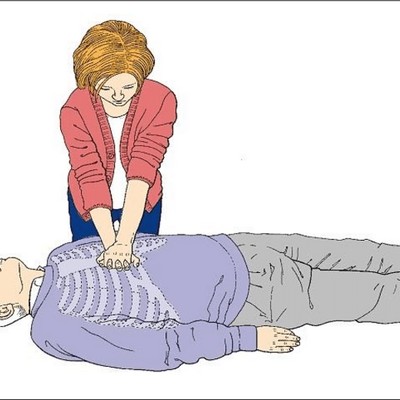One component of CPR is chest compressions.
To ensure optimal patient outcomes, high quality CPR must be performed.
You can ensure high-quality CPR by providing high quality chest compressions, making sure that the:
Patient is on a firm, flat surface to allow for adequate compression.
In a non-healthcare setting this would typically be on the floor or ground, while in a healthcare setting this may be on a stretcher or bed with a CPR board or CPR feature applied.
The chest is exposed to ensure proper hand placement and the ability to visualize chest recoil.
Hands are correctly positioned with the heel of one hand in the center of the chest on the lower half of sternum with the other hand on top.
Most rescuers find that interlacing their fingers makes it easier to provide compressions while keeping the fingers off the chest.
Arms are as straight as possible, with the shoulders directly over the hands to promote effective compressions. Locking elbows will help maintain straight arms.
Compressions are given at the correct rate of at least 100 per minute to a maximum of 120 per minute, and at the proper depth of at least 2 inches for an adult to promote adequate circulation.
The chest must be allowed to fully recoil between each compression to allow blood to flow back into the heart following the compression.
